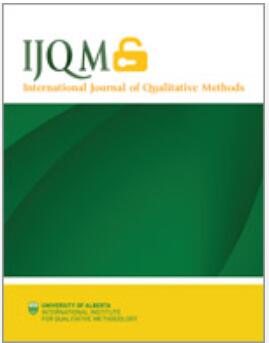Mapping Places of Encounter: An Integrative Methodological Approach to Understanding Social Inclusion
IF 3.8
2区 社会学
Q1 SOCIAL SCIENCES, INTERDISCIPLINARY
引用次数: 2
Abstract
Physical places of encounter are nodes of social interaction in which moments of social inclusion and exclusion crystallize. On a methodological level, meeting places have in the past usually been associated either with firmly established spatial arrangements or with situational opportunities of encounter. Acknowledging the complexity of places of encounter and developing further a spatio-visual mapping tool conducted in various research projects on local inclusion of newcomers, we propose an integrative research approach to capturing, mapping and analyzing places of encounter via four dimensions: level of institutionalization, level of intentionality, level of inclusion and horizontal and vertical scale. The proposed place-based approach holds the chance to explicitly take into account a spatial perspective in the analysis of social interactions. Thus, it goes beyond mere network analysis, but is able to capture the socio-spatial conditions of encounters as pre-configurations of further social dynamics. In doing so, we address not only the methodological gap in research but also the practical relevance for identifying and evaluating locally important meeting places. More specifically, as part of a qualitative interview, the mapping tool can enable the participation of people whose voices are seldom heard, while the inclusion of multiple perspectives on places of encounter may facilitate local governance processes in the social realm.映射相遇地点:理解社会包容的综合方法论方法
相遇的物理场所是社会互动的节点,在这里,社会包容和排斥的时刻具体化了。在方法层面上,过去的会议地点通常要么与牢固的空间安排联系在一起,要么与相遇的情景机会联系在一起。我们认识到相遇地的复杂性,并在不同的新来者本地包容研究项目中进一步发展了一种空间视觉地图工具,我们提出了一种综合研究方法,通过制度化水平、意向性水平、包容水平以及水平和垂直尺度四个维度来捕捉、绘制和分析相遇地。提出的基于地点的方法有机会在分析社会互动时明确考虑空间视角。因此,它超越了单纯的网络分析,而是能够捕捉到相遇的社会空间条件,作为进一步社会动态的预配置。在这样做的过程中,我们不仅解决了研究方法上的差距,而且还解决了确定和评估当地重要会议场所的实际意义。更具体地说,作为定性访谈的一部分,地图工具可以使很少听到声音的人参与进来,而对相遇地点的多种观点的纳入可以促进社会领域的地方治理进程。
本文章由计算机程序翻译,如有差异,请以英文原文为准。
求助全文
约1分钟内获得全文
求助全文
来源期刊

International Journal of Qualitative Methods
SOCIAL SCIENCES, INTERDISCIPLINARY-
CiteScore
6.90
自引率
11.10%
发文量
139
审稿时长
12 weeks
期刊介绍:
Journal Highlights
Impact Factor: 5.4 Ranked 5/110 in Social Sciences, Interdisciplinary – SSCI
Indexed In: Clarivate Analytics: Social Science Citation Index, the Directory of Open Access Journals (DOAJ), and Scopus
Launched In: 2002
Publication is subject to payment of an article processing charge (APC)
Submit here
International Journal of Qualitative Methods (IJQM) is a peer-reviewed open access journal which focuses on methodological advances, innovations, and insights in qualitative or mixed methods studies. Please see the Aims and Scope tab for further information.
 求助内容:
求助内容: 应助结果提醒方式:
应助结果提醒方式:


